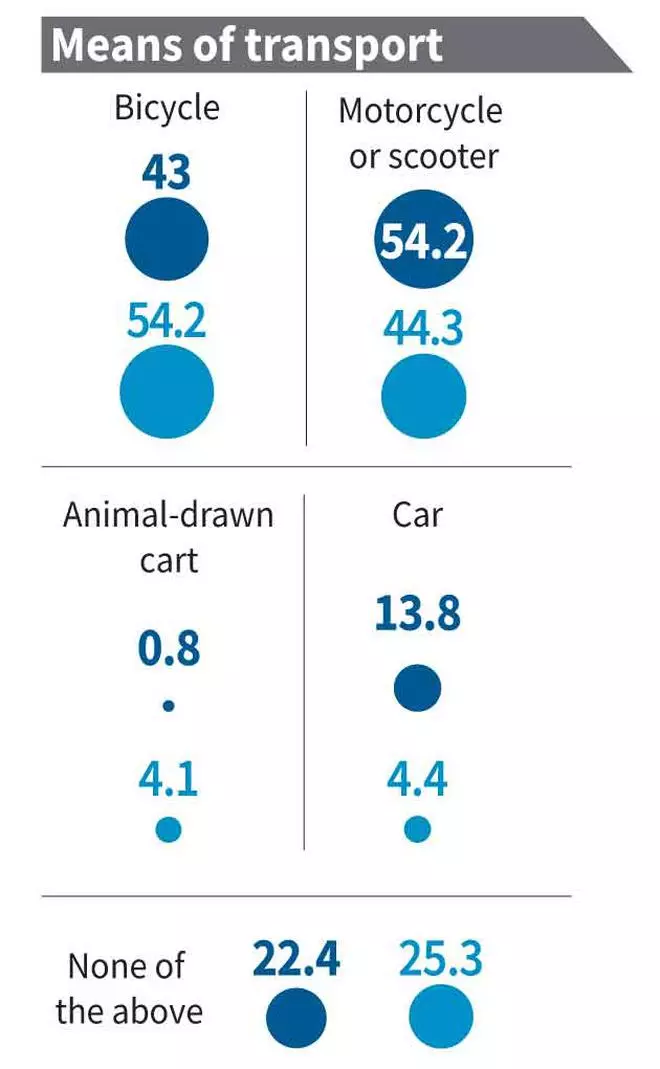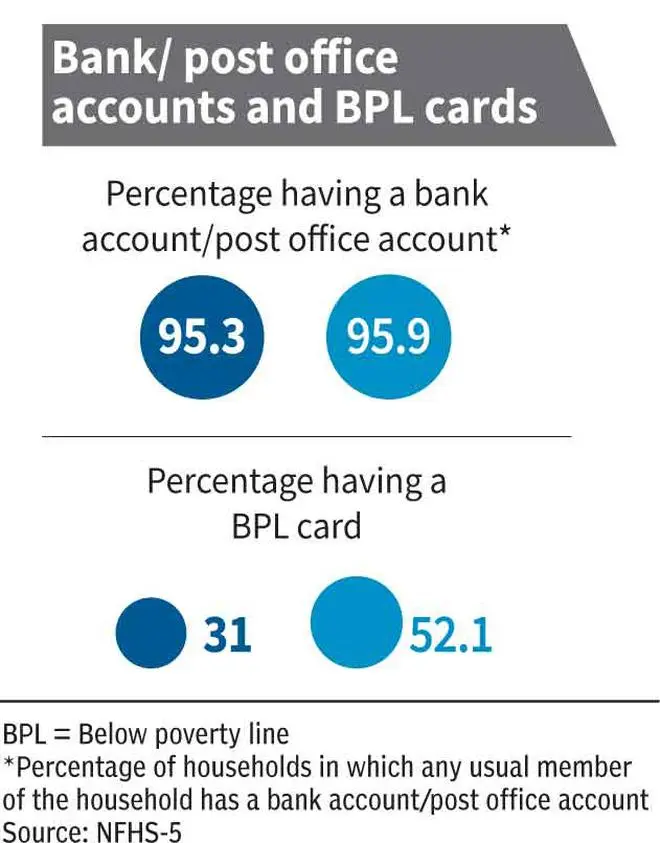Radio/ transistors, black and white television sets, and landline phones are rapidly vanishing from Indian households while 93 per cent of households are now connected to the mobile telephone network for all kinds of communication. But when it comes to commuting, over 50 per cent of Indian households still depend on bicycles as means of transport.
Commuting and communication form the premise of the development paradigm based on industrialization, modernization and urbanization.
The National Family Health Survey (NFHS-5) shows that only 4.9 per cent of households participating in the survey use radio or transistors while only 2.3 per cent use black and white television sets. More than 67 per cent of Indian households have colour television.
About 49 per cent of households have internet access ( 65 per cent in urban areas and 41 per cent in rural areas), and mobile handsets have emerged as a major means of communication in India.
Over 96 per cent of households in urban areas and 91 per cent in rural areas have a mobile telephone. Overall, 93 per cent of households participating in the NFHS survey stated that they have mobile handsets.
Also read

A Deloitte study recently revealed that India will have 1 billion smartphone users by 2026 and rural India will be driving the sale of internet-enabled phones.
Interestingly, mobile penetration is much more compared to computers. Only 9.3 per cent of households reported that they have computers (19.3 per cent in urban areas and 4.4 per cent in rural areas).
Means of transport
Against the backdrop of local, State and union governments spending huge amounts of money on building roads, there is hardly any provision in budgets for building cycle tracks even as 50 per cent of households use the cycle as means of transport. While urban local bodies focus more on creating infrastructure for cars, only 13.8 per cent of people in urban areas use cars for commuting. In rural areas, the percentage of people using cars is just 4.4 per cent.
Motorcycles or scooters dominate the urban transport scenario, with 60.6 per cent of households in the urban area and 44.3 per cent in rural areas using this means of transport. After bicycles, motorcycles or scooters are the most popular means of transport in India.
The importance of public transport could be gauged by the fact that 24 per cent of people don’t have any of the above means of transport.

BPL cards
The possessions of commuting and communicating means can be interpreted against the backdrop of the number of Below Poverty Line (BPL) households. About 45 per cent of households participating in the survey hold BPL cards. The percentage of rural households having BPL cards is more than 52 per cent.
Data shows that BPL status has not affected the penetration of mobile technology in rural and urban India. Mobile has emerged as the major means of receiving and transferring messages.









Comments
Comments have to be in English, and in full sentences. They cannot be abusive or personal. Please abide by our community guidelines for posting your comments.
We have migrated to a new commenting platform. If you are already a registered user of TheHindu Businessline and logged in, you may continue to engage with our articles. If you do not have an account please register and login to post comments. Users can access their older comments by logging into their accounts on Vuukle.